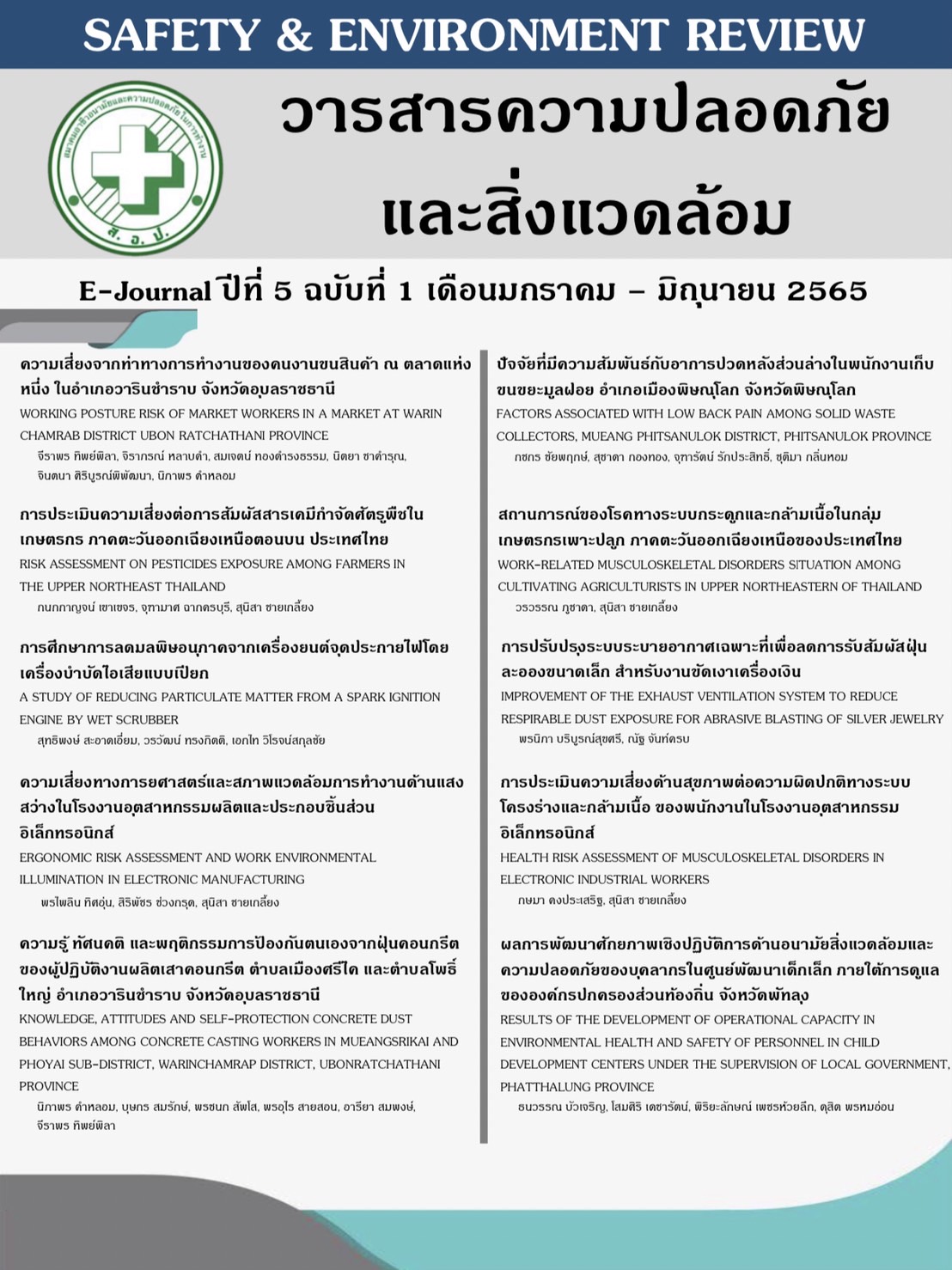A Study of Reducing Particulate Matter from A Spark Ignition Engine by Wet Scrubber
Keywords:
Spark Ignition Engine, Particulate matter, Wet ScrubberAbstract
The situation in Thailand regarding to Particulate Matter (PM) level increase is known as a major cause that affects human health and environment. One of PM issues problems arise from emissions from internal combustion engine vehicles. The changing of spark ignition engine’s emission standard from EURO 4 to EURO 5 and EURO 6 that results in PM reductions will be implemented soon. Seeking PM reduction by implementing existing technologies is of interest. This reason make researcher interest about design and building of the prototype wet scrubber for deserve with vehicles and testing for reducing about emission. In the current study, a Spark-Ignition engine equipped with a wet scrubber in the exhaust system is tested on an Engine Dynamometer. Tests are done and compared between running the exhaust with and without water wet scrubber. The result shows that with wet scrubber equipment, PM can be reduced significantly. This result shows that the potential of using water absorbing PM emit from spark Ignition engine is possible. From the experimental data, the wet scrubber with water can reduce PM up to 60%. However, in term of another emission species, no significant reduction is observed.
References
CECO Environmental. (2018). WHAT IS A WET SCRUBBER. Retrieved December 7, 2021, from https://www.cecoenviro.com/blog/what-is-a-wet-scrubber/
James R. Kastner & K. C. Das Wet Scrubber Analysis of Volatile Organic Compound Removal in the Rendering Industry (2011). Retrieve December 27, 2011, from https://www.tandfonline.com/doi/abs/10.1080/10473289.2002.10470800
Danzomo, Bashir A. Salami, Momoh-Jimoh E. Jibrin, S. Khan and M. R. Nor, I. M.(2012). Performance evaluation of wet scrubber system for industrial air pollution control. . Retrieve December 1, 2012 from http://repository.elizadeuniversity.edu.ng/handle/20.500.12398/480
A Steam Specialist Company. (2021). Wet Scrubber. Retrieved July 15, 2021, from https://www.tlv.com/global/SG/steam-theory/separators.html
Bianchini, A., Pellegrini, M., Rossi, J. and Saccani, C. (2018). Theoretical model and preliminary design of an innovative wet scrubber for the separation of fine particulate matter produced by biomass combustion in small size boilers. Retrieve December 7, 2021, from https://www.sciencedirect.com/science/article/abs/pii/S0961953418301235?via%3Dihub
สหกรณ์ ศิริจันทร์. (2559). บทที่ 2 กฎต่างๆที่เกี่ยวข้องกับแก๊ส. ค้นเมื่อ 15 กรกฎาคม 2564 , จาก https://sites.google.com/a/srru.ac.th/reiyn-ru-reuxng-kaes-by-chembb/kd-tang-thi-keiywkhxng-kab-kaes
บริษัท นิวแม็ก จำกัด. (ไม่ปรากฎปีพิมพ์). Wet Scrubber. ค้นเมื่อ 15 กรกฎาคม 2564 , จาก https://www.pneumax.co.th/article-wet-scrubber-system
N. Hoque , R. Situ, W. Hagan , J. Almedia , W. Lin and R.J. Brown (2014). A Thermo-Fluid Study of a Diesel Engine Wet Scrubber. Retrieve December 8, 2014, https://people.eng.unimelb.edu.au/imarusic/proceedings/19/361.pdf
WeBBusterZ (2020). Baffles in heat exchangers. Retrieve June 8, 2020 from http://www.webbusterz.org/baffles-in-heat-exchangers/
Mohamad Issa , Hussein Ibrahim , Adrian Ilinca , M. Yasser Hayyani (2019) . A Review and Economic Analysis of Different Emission Reduction Techniques for Marine Diesel Engines. Retrieve June 22, 2019, from A Review and Economic Analysis of Different Emission Reduction Techniques for Marine Diesel Engines (scirp.org)
Han Bang-U, Kim Hak-Jun, Kim Yong-Jin and Han kyong soo (2007). Removal Characteristics of Gaseous Contaminants by a Wet Scrubber with Different Packing Materials. Retrieve December 31, 2007 fromhttps://www.koreascience.or.kr/article/JAKO200709905981965.page
Abdulwahid, A., Situ, R. and Brown, R. (2018). Underground Diesel Exhaust Wet Scrubbers: Current Status and Future Prospects. Retrieve December 7, 2018, from https://researchonline.jcu.edu.au/56724/1/56724_Abdulwahid_et_al_2018.pdf
Downloads
Published
Issue
Section
License
Copyright (c) 2022 SAFETY & ENVIRONMENT REVIEW

This work is licensed under a Creative Commons Attribution-NonCommercial-NoDerivatives 4.0 International License.
This article is published under a Creative Commons Attribution-NonCommercial-NoDerivatives 4.0 International License (CC BY-NC-ND 4.0), which allows others to share the article with proper attribution to the authors and prohibits commercial use or modification. For any other reuse or republication, permission from the journal and the authors is required.



